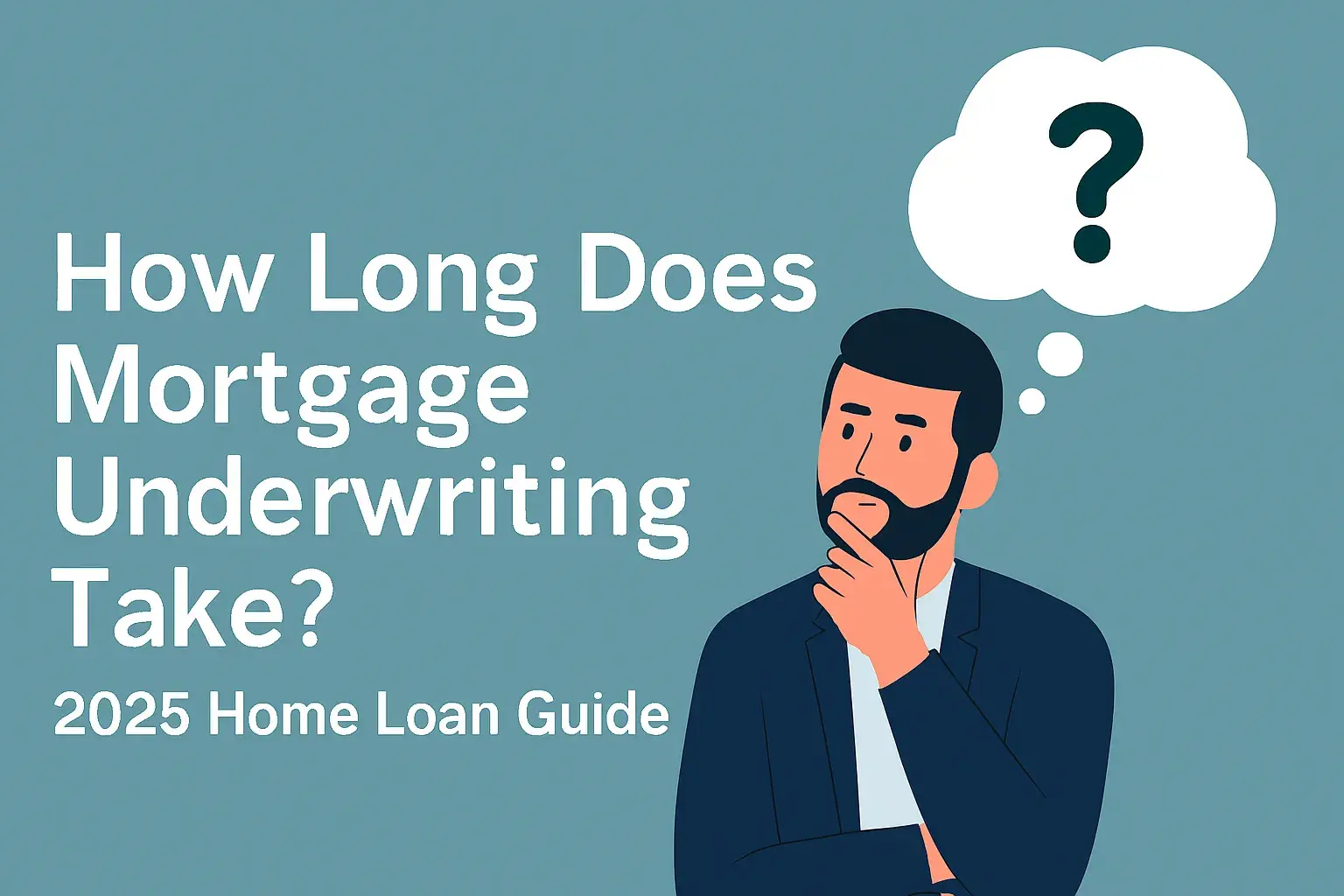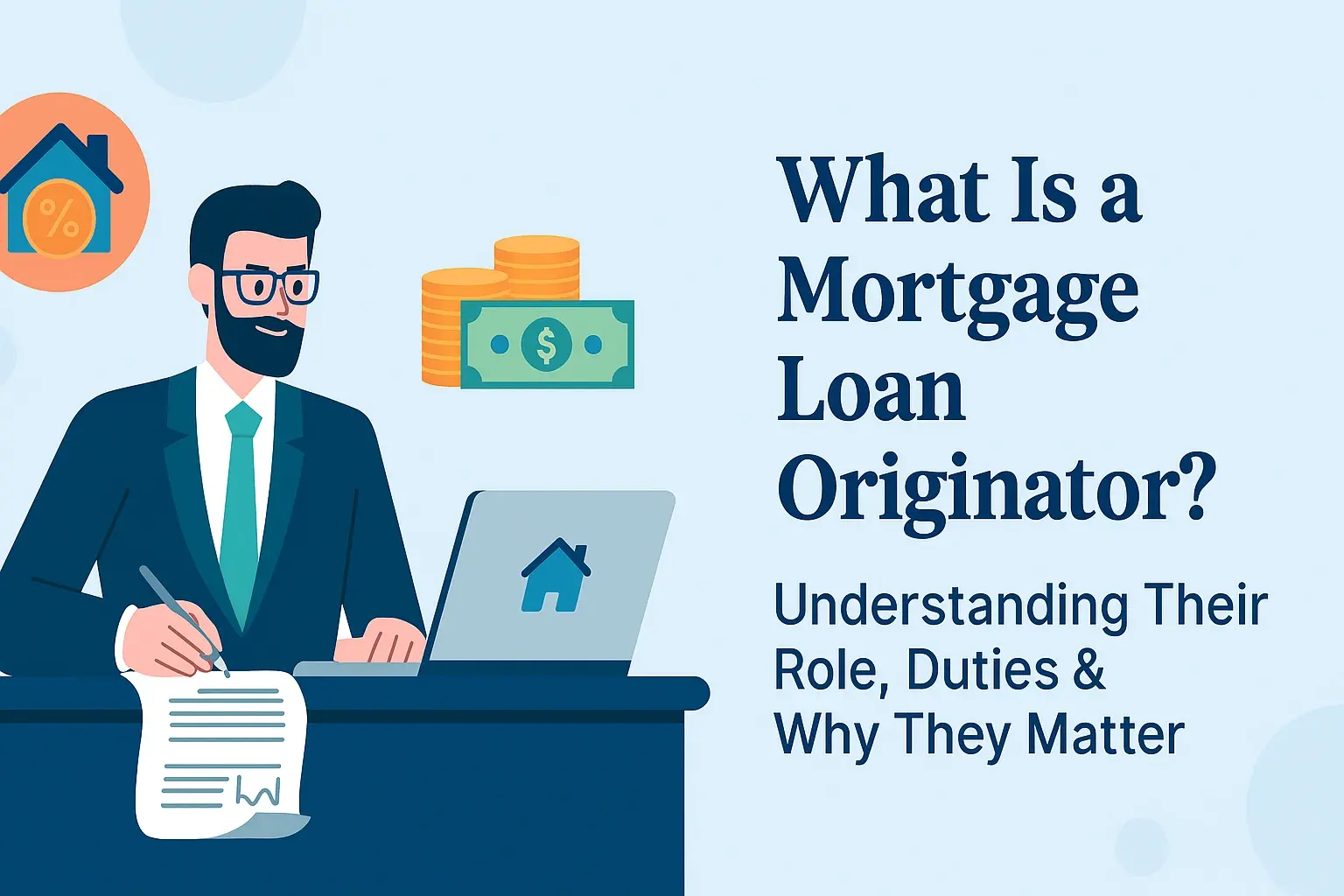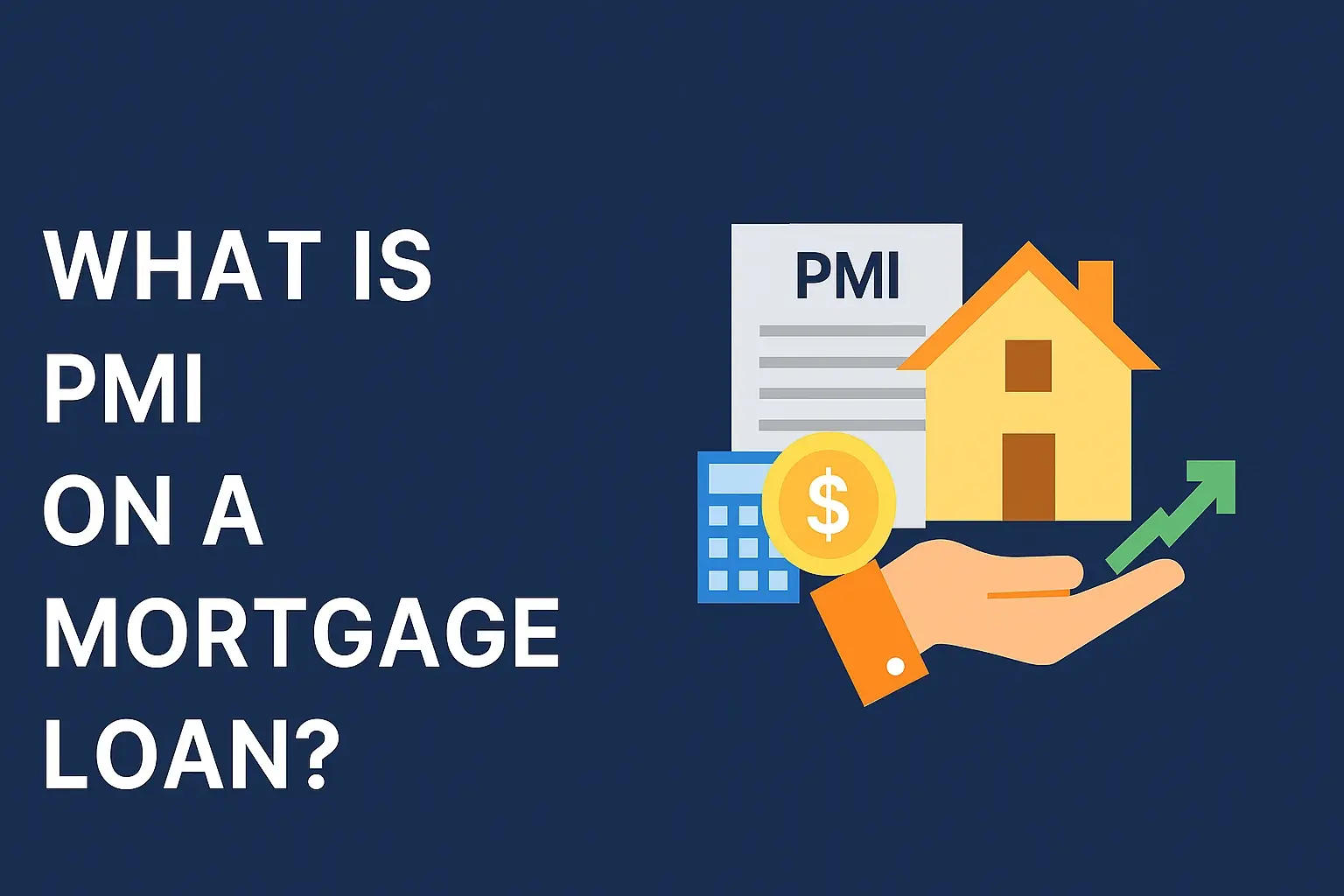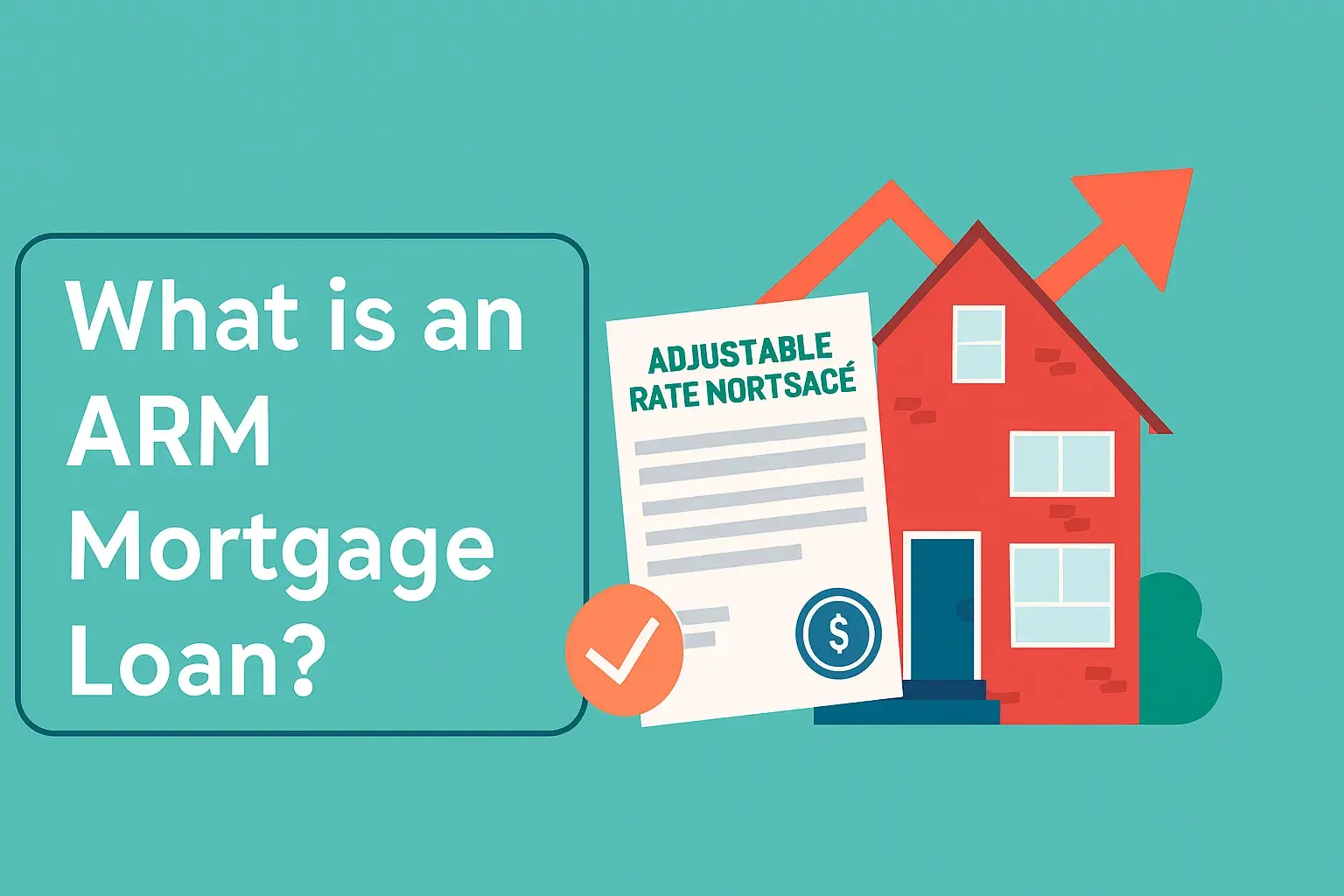-
Posted on: 28 Oct 2025

-
Understanding the mortgage underwriting timeline is crucial for borrowers. This guide demystifies the process, revealing how long underwriting typically takes and the factors influencing its duration, empowering you to manage expectations and plan your homeownership journey effectively.
Understanding the Mortgage Underwriting Timeline
Embarking on the journey to homeownership involves navigating a complex financial landscape, and at its core lies the mortgage underwriting process. For many prospective homeowners, a burning question emerges: "How long does underwriting take for a mortgage loan?" This period can feel like a waiting game, filled with anticipation and sometimes, uncertainty. In 2025, understanding this timeline is more critical than ever, as market conditions and lender efficiencies can subtly shift the duration. This comprehensive guide aims to shed light on the typical underwriting timeframe, the intricate steps involved, and the myriad factors that can either expedite or prolong this essential stage of securing your home loan.
We will delve into what underwriting truly entails, break down the average duration, and explore common pitfalls that can lead to delays. Furthermore, we'll offer actionable advice on how you, as a borrower, can contribute to a smoother and potentially faster underwriting experience. By demystifying this crucial phase, you can approach your mortgage application with greater confidence and a clearer understanding of what to expect.
What Exactly is Mortgage Underwriting?
Before we can discuss the timeline, it's essential to grasp the fundamental purpose of mortgage underwriting. In essence, underwriting is the rigorous evaluation process that a lender undertakes to assess the risk associated with granting a mortgage to a borrower. It's the gatekeeper that determines whether you meet the lender's criteria for borrowing a significant sum of money.
Think of the underwriter as a financial detective. Their primary objective is to verify the accuracy and completeness of all the information you've provided in your loan application. They are meticulously examining your financial profile to ensure that you are a reliable borrower who is likely to repay the loan as agreed. This involves a deep dive into several key areas:
- Creditworthiness: The underwriter will scrutinize your credit history, scores, and reports from major credit bureaus. They are looking for a consistent history of responsible debt management, low credit utilization, and a minimal number of late payments or defaults. A strong credit profile is a significant indicator of your ability to manage financial obligations.
- Income and Employment Stability: Lenders need assurance that you have a stable and sufficient income to cover your mortgage payments, along with other living expenses. Underwriters will verify your employment history, income sources (salary, bonuses, self-employment income), and the stability of your profession. This often involves reviewing pay stubs, W-2 forms, tax returns, and potentially contacting your employer.
- Assets and Reserves: Your ability to make a down payment and cover closing costs is crucial. Underwriters will examine your bank statements, investment accounts, and other assets to confirm the source and availability of these funds. They also look for sufficient cash reserves (typically several months of mortgage payments) to act as a financial cushion in case of unexpected circumstances.
- Debt-to-Income Ratio (DTI): This is a critical metric that compares your total monthly debt payments (including the proposed mortgage payment) to your gross monthly income. Lenders have specific DTI limits, and a lower ratio generally indicates a stronger ability to handle additional debt.
- Property Value and Condition: While the appraisal primarily determines the property's value, the underwriter reviews the appraisal report to ensure the property is a sound investment and meets the lender's standards. They consider factors like the condition of the home and its marketability.
The underwriter's role is to weigh all these factors and make a final decision: approve the loan, deny it, or approve it with specific conditions that must be met before closing. This comprehensive review is designed to protect both the lender from financial loss and the borrower from taking on a loan they cannot afford.
The Average Mortgage Underwriting Timeline: What to Expect in 2025
The question of "how long does underwriting take for a mortgage loan" doesn't have a single, definitive answer, as it's a dynamic process influenced by numerous variables. However, in 2025, industry professionals generally estimate that the underwriting phase, from the moment your application is complete and submitted for review to the final approval or denial, can typically range from 2 to 6 weeks.
It's important to distinguish this from the entire mortgage process, which includes pre-approval, application, appraisal, title search, and closing. Underwriting is a critical, albeit often concentrated, part of that larger timeline.
Here's a breakdown of what these timeframes might look like:
- Expedited Underwriting (1-2 weeks): This is the ideal scenario, often occurring when a borrower has a pristine financial profile, a straightforward loan scenario, and all documentation is readily available and perfectly organized. Lenders with highly efficient systems and ample staffing can sometimes process applications much faster. This is more common for well-qualified buyers with conventional loans.
- Standard Underwriting (3-4 weeks): This is the most common timeframe for many borrowers. It allows ample time for the underwriter to thoroughly review all submitted documents, verify information, and address any minor questions or requests for clarification. This is typical for borrowers with solid credit and income but perhaps some minor complexities.
- Extended Underwriting (5-6+ weeks): Delays can push the underwriting process beyond the average. This can happen due to a high volume of applications at the lender, the complexity of the borrower's financial situation, issues with submitted documentation, or the need for additional verification or clarification. For jumbo loans, self-employment income, or unique property types, longer timelines are often expected.
2025 Statistics and Trends: While specific data for 2025 is still emerging, current industry trends suggest that lenders are continually investing in technology to streamline underwriting. Automated underwriting systems (AUS) can significantly speed up initial reviews. However, complex cases still require human underwriter intervention. The current interest rate environment and market demand can also influence lender capacity and, consequently, processing times. Lenders experiencing a surge in applications may see longer turnarounds.
It is crucial to remember that these are averages. Your individual experience may vary. Open communication with your loan officer is key to understanding your specific timeline and any potential deviations.
Key Factors Influencing How Long Underwriting Takes
The duration of the mortgage underwriting process is not set in stone. Several critical factors can significantly impact how long it takes for an underwriter to give the final green light. Understanding these elements can help you anticipate potential bottlenecks and prepare accordingly.
Borrower's Financial Profile Complexity
The simpler your financial picture, the faster underwriting tends to proceed. Complex situations often require more in-depth scrutiny.
- Credit Score and History: A high credit score (e.g., 740+) and a clean credit history with no significant red flags (like bankruptcies, foreclosures, or numerous late payments) generally expedite the process. Low credit scores or a history of financial difficulties will necessitate more extensive review.
- Income Stability and Type: Borrowers with W-2 employment and a consistent salary often have a smoother underwriting experience. Self-employed individuals, those with commission-based income, or those receiving significant bonuses or rental income may face longer review periods as underwriters need to meticulously verify the stability and accuracy of these varied income streams. This often involves requesting multiple years of tax returns and business documentation.
- Assets and Down Payment Source: While having substantial assets is positive, the source of these funds is critical. If your down payment comes from gifted funds, complex investment accounts, or recent large deposits, underwriters will require extensive documentation to trace the money and ensure it complies with anti-money laundering regulations and lender policies.
- Debt-to-Income Ratio (DTI): A low DTI ratio suggests you can comfortably handle mortgage payments. A high DTI ratio, even if within acceptable limits, might trigger closer examination of your spending habits and financial obligations.
Loan Type and Lender Policies
Different loan programs have varying underwriting requirements, and lenders have their own internal guidelines.
- Conventional Loans: These are often the most straightforward and can sometimes be processed faster, especially if they meet Fannie Mae or Freddie Mac guidelines and can be approved through automated underwriting systems.
- FHA Loans: While designed to help borrowers with lower credit scores or smaller down payments, FHA loans have specific documentation requirements and compliance checks that can sometimes add to the underwriting time.
- VA Loans: These loans for veterans also have unique documentation and verification processes that can influence the timeline.
- USDA Loans: Similar to FHA and VA loans, USDA loans have specific eligibility and documentation requirements.
- Jumbo Loans: Loans exceeding conforming limits often involve more rigorous underwriting due to the higher risk involved. Lenders may require more extensive documentation, higher credit scores, and larger reserves.
- Lender Specific Guidelines: Each lender has its own risk tolerance and internal policies. Some lenders are known for faster processing times due to efficient systems and staffing, while others may be more conservative and take longer.
Completeness and Accuracy of Documentation
This is perhaps the most controllable factor for borrowers. Missing, incomplete, or inaccurate documents are a primary cause of underwriting delays.
- Initial Application: Providing all required information accurately from the outset is crucial.
- Supporting Documents: This includes pay stubs, W-2s, tax returns, bank statements, gift letters, divorce decrees, bankruptcy filings, etc. Any discrepancies or missing pages can halt the process.
- Appraisal and Title Reports: Issues identified in the appraisal (e.g., necessary repairs) or title report (e.g., liens, easements) will need to be resolved, adding time.
Appraisal and Property-Related Issues
The property itself plays a significant role in the underwriting timeline.
- Appraisal Turnaround Time: The time it takes for an appraiser to complete their report can vary based on appraiser availability and the complexity of the property.
- Appraisal Findings: If the appraisal comes in lower than the purchase price, or if it identifies significant repair needs, the underwriter will require these issues to be addressed or the loan amount may need to be adjusted. This can involve renegotiating the purchase price, making repairs, or requiring additional funds from the borrower.
- Property Type: Unique properties, such as co-ops, condos, or homes with certain structural issues, might require additional documentation or specialized appraisals, extending the timeline.
Lender's Workload and Staffing
External factors related to the lender can also affect processing times.
- Application Volume: During peak real estate seasons or periods of high refinancing activity, lenders may experience a surge in applications, leading to longer underwriting queues.
- Underwriter Availability: The number of available underwriters and their current caseload directly impacts how quickly your file can be reviewed.
- Lender's Internal Processes: Some lenders have more streamlined, technology-driven processes, while others may rely on more manual reviews.
By understanding these factors, borrowers can proactively gather necessary documentation, ensure financial accuracy, and communicate effectively with their loan officer to help mitigate potential delays.
A Step-by-Step Look at the Mortgage Underwriting Process
The mortgage underwriting process is a systematic examination designed to ensure that a loan meets all lender and investor guidelines. While the exact internal procedures may vary slightly between lenders, the core steps remain consistent. Understanding this flow can demystify the waiting period and highlight where your input might be needed.
Step 1: Initial Submission and Review
Once you've submitted your complete loan application and all initial supporting documents (proof of income, assets, identification, purchase agreement, etc.), the loan file is handed over to the underwriting department. An initial review is conducted to ensure that all necessary paperwork is present and that the application is complete enough to proceed.
What happens: A loan processor often performs this initial check, confirming that the basic requirements are met. If anything is missing, they will contact you or your loan officer to request it.
Step 2: Automated Underwriting System (AUS) Review
For many conventional loans, the application data is first entered into an Automated Underwriting System (AUS), such as Fannie Mae's Desktop Underwriter (DU) or Freddie Mac's Loan Product Advisor (LPA). These sophisticated algorithms analyze your credit history, income, assets, and other data points against established lending criteria.
What happens: The AUS provides an initial recommendation: Approve, Approve/Ineligible, or Refer. An "Approve" recommendation means the system finds your loan meets the guidelines, but it will still be subject to human review. "Refer" indicates that the system cannot make a decision and requires manual review by an underwriter.
Step 3: Manual Underwriter Review
Whether the AUS referred the loan or provided an "Approve" recommendation, a human underwriter will conduct a thorough manual review. This is where the deeper dive into your financial situation occurs.
What happens: The underwriter meticulously examines:
- Your credit report for any anomalies.
- Your income documentation to verify stability and sufficiency.
- Your asset statements to confirm the source and availability of funds for the down payment and closing costs.
- Your debt-to-income ratio.
- The purchase agreement and preliminary title report.
- The appraisal report once it's completed.
This is often the stage where underwriters may issue "conditions" – requests for additional documentation or clarification. For example, they might ask for a letter of explanation for a specific credit inquiry or a more detailed statement for a large deposit.
Step 4: Verification of Information
Underwriters don't just take your word for it; they verify everything. This can involve:
- Employment Verification: Contacting your employer to confirm your job title, salary, and dates of employment.
- Asset Verification: Reviewing bank statements and other financial documents.
- Appraisal Review: Ensuring the property meets the lender's standards and is valued appropriately.
- Title Report Review: Confirming clear title to the property.
Step 5: Issuance of Conditions
Based on their review, the underwriter will issue a list of conditions that must be met before the loan can be approved. These conditions can range from simple requests for missing documents to more complex requirements, such as proof of repair completion on the property.
What happens: Your loan officer and processor will work with you to gather the required documentation or evidence to satisfy these conditions. Promptly providing this information is crucial to avoid extending the underwriting timeline.
Step 6: Final Underwriting Approval
Once all conditions have been met and verified by the underwriter, the loan receives final approval. This is a significant milestone, signifying that the lender is confident in your ability to repay the loan and that the property meets their standards.
What happens: The underwriter signs off on the loan, and the file is then sent to the closing department to prepare the final loan documents.
Step 7: Post-Approval Review (Less Common)
In some cases, especially for complex loans or if new information arises, a secondary review or sign-off from a senior underwriter or underwriting manager might be required. This is less common for standard transactions.
The entire process is iterative. If new issues arise or if the conditions are not met satisfactorily, the file may be sent back for further review or even denied.
Common Causes of Delays in Mortgage Underwriting
While aiming for a smooth and efficient underwriting process is everyone's goal, several common issues can unfortunately lead to delays. Recognizing these potential pitfalls can help borrowers take proactive steps to avoid them.
Incomplete or Inaccurate Documentation
This is by far the most frequent culprit behind underwriting delays. Missing pages, unclear copies, or inconsistent information can bring the process to a halt.
- Missing Documents: Failing to provide all requested documents, such as the last two months of bank statements, all pages of tax returns, or a complete gift letter.
- Inaccurate Information: Discrepancies between information provided on the application and supporting documents (e.g., income stated on the application doesn't match pay stubs).
- Unclear Copies: Submitting blurry or unreadable documents that the underwriter cannot decipher.
- Outdated Documents: Providing pay stubs or bank statements that are too old according to lender requirements.
Unexplained Large Deposits or Credit Inquiries
Underwriters are trained to identify potential red flags related to the source of funds and borrower behavior.
- Large Deposits: Unexpectedly large deposits into your bank accounts that cannot be clearly traced to a legitimate source (like a documented sale of an asset or a legitimate gift) will require extensive explanation and documentation. This can delay the process as underwriters seek clarity.
- New Credit Inquiries: Opening new credit accounts or applying for significant new loans (like a car loan or furniture financing) during the mortgage process can negatively impact your credit score and debt-to-income ratio, prompting the underwriter to re-evaluate your financial stability.
Issues with the Appraisal
The property appraisal is a critical component, and any problems identified can cause delays.
- Low Appraisal Value: If the appraisal comes in lower than the agreed-upon purchase price, the lender may not be willing to lend the full amount. This can lead to renegotiations, requiring the borrower to bring more cash to closing, or potentially derailing the deal if an agreement cannot be reached.
- Required Repairs: If the appraisal identifies significant structural issues, safety hazards, or necessary repairs (e.g., a faulty roof, outdated electrical systems, peeling paint on older homes), the underwriter will likely require these to be fixed before approving the loan. Scheduling and completing these repairs can take time.
- Appraiser Availability: In some markets, there can be a backlog of appraisers, leading to delays in scheduling the appraisal itself.
Title Issues
The title report ensures the seller has clear ownership of the property and that there are no liens or encumbrances that could affect the buyer's ownership.
- Liens: Existing liens on the property (e.g., from unpaid taxes, contractors, or previous mortgages) must be cleared before closing.
- Easements or Encumbrances: Unclear easements or other restrictions on the property's use might require further investigation or resolution.
- Chain of Title Problems: Issues with the history of ownership can sometimes arise and require legal intervention to resolve.
Changes to Employment or Income
Stability in your employment and income is a cornerstone of mortgage approval.
- Job Change: A change in employment during the underwriting process, especially if it involves a significant pay cut, a change in industry, or a move to self-employment, can trigger a reassessment of your loan eligibility.
- Income Fluctuations: Significant fluctuations in commission-based or self-employment income can lead to extended verification periods.
Lender-Specific Bottlenecks
Sometimes, the delay is not due to the borrower but the lender's internal processes.
- High Application Volume: Lenders can become overwhelmed during busy real estate markets, leading to longer processing times for all stages, including underwriting.
- Understaffing: A shortage of underwriters or loan processors at the lender can create backlogs.
- Complex Loan Products: Certain niche or complex loan products may require specialized underwriting expertise, which might not be readily available.
Borrower's Responsiveness
Even with a perfectly clean financial profile, delays can occur if the borrower is slow to respond to requests for additional information or documentation.
- Delayed Responses: Failing to provide requested documents or explanations promptly can significantly extend the underwriting timeline.
To mitigate these delays, borrowers should be organized, responsive, and transparent throughout the mortgage process. Maintaining open communication with your loan officer is paramount.
Strategies to Potentially Speed Up Your Mortgage Underwriting
While you can't directly control the underwriter's workload or the lender's internal systems, you can significantly influence the speed of your mortgage underwriting by being prepared and proactive. Here are several strategies to potentially expedite the process:
1. Be Hyper-Organized with Your Documentation
This is the single most impactful action you can take. Gather and organize all required documents *before* you even apply, or immediately after. Aim for completeness and accuracy from the start.
- Create a Checklist: Work with your loan officer to get a comprehensive list of all necessary documents.
- Digital Copies: Have clear, high-resolution digital scans or photos of all documents readily accessible.
- Organize by Category: Group documents by type (income, assets, identification, etc.) for easy retrieval.
- Review for Accuracy: Double-check that all information on your application matches your supporting documents.
2. Maintain Financial Stability During the Process
Your financial behavior between application and closing can impact underwriting.
- Avoid New Debt: Do not open new credit cards, take out new loans (car, personal, student), or make large purchases on credit. This can alter your debt-to-income ratio and credit score.
- Limit Large Transactions: Keep large, unexplained deposits or withdrawals to a minimum. If you must make a significant transaction, be prepared to provide clear documentation of its source and purpose.
- Maintain Employment: Avoid changing jobs if possible, especially if it involves a significant pay cut or a move to a less stable employment type.
3. Respond Promptly to Underwriter Requests
When your loan officer or processor contacts you with a request for additional information or clarification, treat it with urgency.
- Act Immediately: The sooner you provide what's needed, the sooner the underwriter can move forward.
- Provide Complete Answers: If a letter of explanation is required, be thorough and address all points the underwriter may be concerned about.
- Clarify if Unsure: If you don't understand a request, ask your loan officer for clarification rather than guessing.
4. Choose the Right Lender and Loan Officer
Not all lenders are created equal in terms of efficiency.
- Research Lenders: Look for lenders with a reputation for efficient processing and good communication. Online reviews and recommendations can be helpful.
- Experienced Loan Officer: A seasoned loan officer can anticipate potential issues, guide you through the process, and advocate on your behalf with the underwriting team.
- Technology Adoption: Lenders that heavily utilize technology for document submission and communication may offer faster turnarounds.
5. Understand Your Loan Program
Some loan types inherently take longer to underwrite.
- Conventional vs. Government Loans: While conventional loans can sometimes be fast-tracked through AUS, government-backed loans (FHA, VA, USDA) often have more stringent documentation and compliance requirements that can extend the timeline.
- Jumbo Loans: These require more extensive underwriting due to the higher loan amounts.
6. Be Prepared for Appraisal Issues
While you can't guarantee a perfect appraisal, you can be ready for potential outcomes.
- Understand Market Value: Have a realistic understanding of your home's market value based on comparable sales.
- Address Minor Issues Proactively: If you know of minor issues with the property that might be flagged (e.g., a leaky faucet, a broken window pane), consider addressing them before the appraisal.
- Be Ready for Re-inspection: If repairs are required, have contractors lined up and be prepared for a potential re-inspection.
7. Communicate Effectively
Maintain open and consistent communication with your loan officer.
- Regular Check-ins: Ask for updates periodically, but avoid excessive contact that could overwhelm your loan officer.
- Be Transparent: If you anticipate any issues or have questions, bring them up early.
By adopting these strategies, you can significantly increase the likelihood of a smoother and faster mortgage underwriting experience, bringing you closer to closing on your new home.
Underwriting vs. Appraisal: Understanding the Differences
In the mortgage process, two critical evaluations take place: underwriting and appraisal. While both are essential for loan approval, they serve distinct purposes and are conducted by different parties. Understanding their roles is key to navigating the process effectively.
The Appraisal
Purpose: The primary goal of an appraisal is to determine the fair market value of the property you intend to purchase. Lenders require an appraisal to ensure that the collateral securing the loan (the house) is worth at least the amount they are lending. This protects the lender from significant loss if the borrower defaults.
Who Conducts It: A licensed or certified appraiser, who is an independent third party, performs the appraisal. They are chosen by the lender but are expected to provide an unbiased valuation.
What They Evaluate:
- Property Condition: The appraiser inspects the physical condition of the home, noting any significant defects, needed repairs, or upgrades.
- Features and Size: They measure the home's square footage, number of bedrooms/bathrooms, lot size, and other features.
- Location: The neighborhood and surrounding area are considered.
- Comparable Sales (Comps): The appraiser analyzes recent sales of similar properties in the same area to establish a value benchmark.
- Market Trends: They consider current market conditions, such as supply and demand.
Outcome: The appraisal results in a detailed report outlining the property's value, its condition, and any potential issues. This report is then submitted to the lender.
The Underwriting
Purpose: Mortgage underwriting is the process where the lender assesses the overall risk of lending money to a specific borrower. It's about determining the borrower's ability and willingness to repay the loan, based on their financial profile and the property's suitability as collateral.
Who Conducts It: An underwriter, who is an employee of the lending institution, performs this evaluation.
What They Evaluate:
- Borrower's Creditworthiness: Credit scores, credit history, and payment patterns.
- Income and Employment Stability: Verification of income sources, employment history, and job stability.
- Assets and Reserves: Review of bank statements, investments, and other assets to confirm down payment funds and financial reserves.
- Debt-to-Income Ratio (DTI): Calculation of the borrower's total monthly debt obligations relative to their gross monthly income.
- Property as Collateral: While the appraisal provides the value, the underwriter reviews the appraisal report to ensure the property meets minimum lending standards and is a sound investment. They also review the title report for any encumbrances.
Outcome: The underwriter makes the final decision to approve, deny, or approve the loan with conditions. Their decision is based on the lender's risk tolerance and guidelines.
Key Differences Summarized
Feature Appraisal Underwriting Primary Focus Property Value & Condition Borrower's Risk & Ability to Repay Conducted By Independent Appraiser Lender's Underwriter Key Inputs Property inspection, comparable sales, market data Credit report, income verification, asset statements, DTI, appraisal report, title report Decision Made Property's fair market value Loan Approval/Denial/Conditions While the appraisal focuses on the "what" (the property), underwriting focuses on the "who" (the borrower) and the "how" (how the loan will be repaid). Both are indispensable steps in the mortgage lending process.
After Underwriting: What Comes Next?
Receiving final loan approval from underwriting is a significant milestone, marking the end of one crucial phase and the beginning of the final stretch toward homeownership. However, the process isn't quite complete yet. Here's what typically happens after your mortgage application has successfully cleared underwriting:
1. Closing Disclosure (CD) Preparation
Once underwriting is complete and the loan is approved, the lender will prepare the Closing Disclosure (CD). This legally required document provides the final terms of your loan, including the interest rate, monthly payment, closing costs, and an itemized list of all fees associated with the loan.
What to expect: You will receive the CD at least three business days before your scheduled closing date. This "three-day rule" is a consumer protection measure designed to give you ample time to review the document and compare it to the Loan Estimate (LE) you received earlier in the process. Carefully scrutinize the CD for any discrepancies or unexpected charges.
2. Final Loan Document Preparation
Simultaneously, the lender's closing department or a designated title company/attorney will begin preparing the final loan documents. These are the legally binding contracts you will sign at closing.
What to expect: This includes the promissory note (your promise to repay the loan), the mortgage or deed of trust (which secures the loan with the property), and various other disclosures and agreements.
3. Scheduling the Closing
With the CD issued and loan documents in preparation, the next step is to finalize the closing date and time. This is usually coordinated between your loan officer, the title company or closing attorney, and you.
What to expect: The closing is typically held at the title company's office, an attorney's office, or sometimes at the real estate agent's office. Ensure you have confirmed the exact location and time.
4. Final Walk-Through
In the 24-48 hours leading up to your closing, you will typically conduct a final walk-through of the property. This is your last opportunity to ensure that the property is in the agreed-upon condition, that any required repairs have been completed, and that all included fixtures and appliances are present and in working order.
What to expect: Bring your agent with you if possible. Document any issues you find immediately and communicate them to your agent and loan officer.
5. The Closing Appointment
This is the culmination of the entire mortgage process. At the closing, you will sign all the final loan documents, transfer ownership of the property, and pay your closing costs and down payment.
What to expect: You will need to bring a valid government-issued ID and, typically, a certified or cashier's check for the amount due (as specified on the CD). The closing agent will guide you through signing the stack of documents. Be prepared for this to take anywhere from 30 minutes to a couple of hours.
6. Funding and Recording
After all documents are signed, the lender will fund the loan (disburse the funds to the seller and other parties). The deed and mortgage/deed of trust will then be recorded with the local government to make your ownership and the lender's lien official.
What to expect: Once the loan is funded and recorded, you will receive the keys to your new home! The original signed documents are typically kept by the lender or title company, but you will receive copies.
Successfully navigating underwriting is a critical step, but staying informed about the subsequent stages ensures a smooth transition to becoming a homeowner.
Conclusion: Navigating Your Mortgage Underwriting Journey
The question of "how long does underwriting take for a mortgage loan" is a common concern for anyone navigating the path to homeownership. In 2025, while the average timeframe typically spans 2 to 6 weeks, it's crucial to understand that this is a variable process. Factors ranging from the complexity of your financial profile and the type of loan you're seeking to the completeness of your documentation and the lender's current workload can all influence the duration.
We've explored the intricate role of the underwriter, the step-by-step journey of the underwriting process, and the common hurdles that can lead to delays. By being organized, transparent, and responsive, you can significantly contribute to a smoother and potentially faster underwriting experience. Maintaining financial stability during this period, choosing a reputable lender, and understanding the differences between underwriting and appraisal are also key strategies for success.
Ultimately, while patience is a virtue during this stage, proactive preparation and open communication with your loan officer are your most powerful tools. By demystifying the underwriting timeline and understanding the contributing factors, you can approach this essential phase of your mortgage application with greater confidence and clarity, bringing you one step closer to unlocking the door of your new home.









